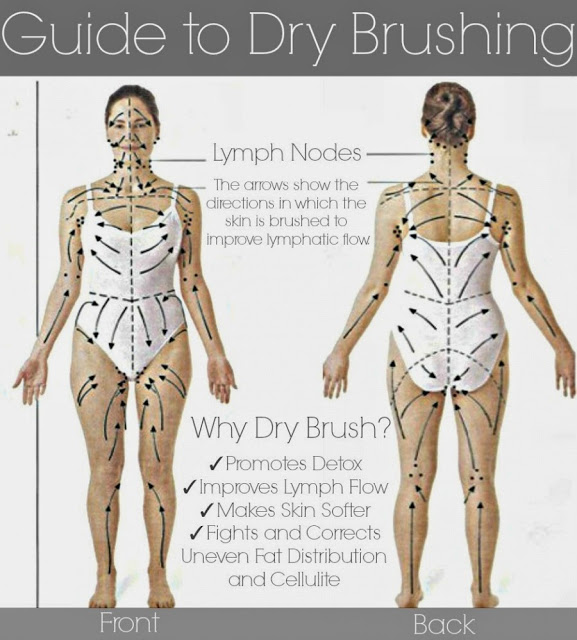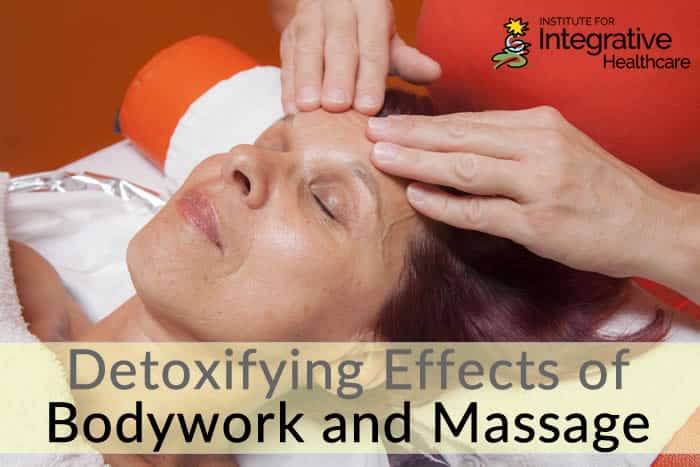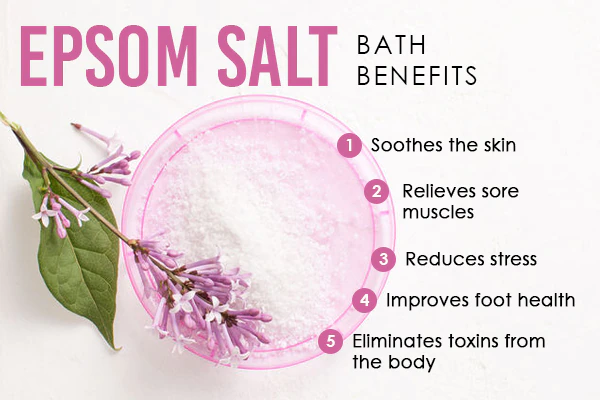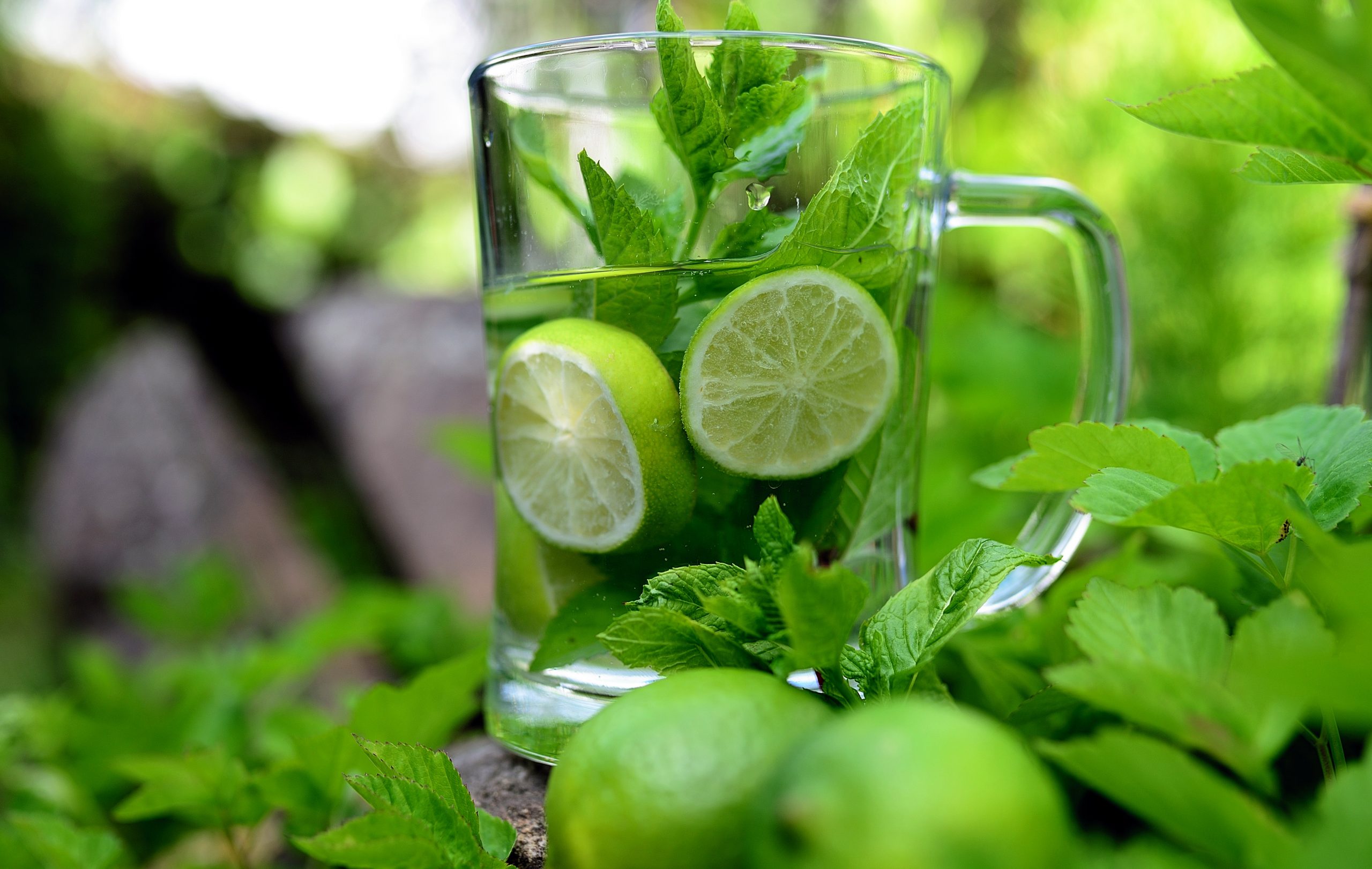Other ways to Detox
Here are some other ways you can eliminate toxins from your body.
Dry Brushing

Dry brushing is pretty much exactly what it sounds like. You take a body brush (look for one with firm, natural bristles) and use it to gently massage your body in an upward motion. This process brightens the skin and also makes your moisturizer more effective, as it sloughs off dead skin. And as the name implies, the brush and your skin should be—you guessed it—dry while you do it.
While dry brushing isn’t the be-all end-all for attaining perfect skin, it does have its own set of benefits, from plumping to exfoliating.
- Boosts circulation: If you’ve noticed that your skin is red after dry brushing, it’s not just a result of irritation, and it actually isn’t a cause for concern. The redness, which is just a bit of inflammation, is the result of increased circulation in the areas you’ve been dry brushing. Your body is simply pushing more blood to those areas.
- Aids with lymphatic drainage: Aside from leaving you with glowing skin, dry brushing can encourage lymphatic drainage. All blood carries lymph fluid, which filters through the lymph nodes. Dry brushing speeds up the rate of blood pumping, which helps get the lymph through the body, therefore removing toxins and pathogens more quickly.
- Exfoliates dead skin: As with all methods of exfoliating, dry brushing gets rid of the day’s dirt and oil as well as dead skin cells. The result is increased cell turnover and more radiant, smooth skin.
- Plumps the skin: Many swear their cellulite is less noticeable after dry brushing, due to temporary plumping effect it has on the skin. It can even help with the appearance of sun damage.
Dry Brushing Steps
There’s a method to dry brushing and it doesn’t involve randomly scrubbing a brush all over your body. Here are the proper steps to take note of:
- To dry-brush properly, first make sure your skin is completely dry.
- Starting at your ankle, move your brush over your skin in long, circular motions that go in the direction of your heart.
- Maintain a slightly firm pressure as you dry brush.
Dry-brush right before you shower. After you rinse off, slather on a moisturizer to seal in all of your hard work.
Detox Massage

A detox massage is a form of deep tissue massage therapy that focuses on the body’s muscle tissues, lymphatic system, and mental stimulation. Daily life brings toxins from all angles – artificial additives, pesticides, junk food, and other environmental or recreational toxins that clog the body and prevent a healthy, happy body and mind. With detox massage, the key areas for waste removal are stimulated, making it easier for the body to release toxins.
Detox massage techniques help strengthen and relax your muscles; alternating pressures on muscles help to strengthen, stimulate, and ultimately release tension and toxins that have built up.
Detox massage, like all massage, helps improve circulation throughout the body. Better circulation means more oxygen, nutrients, and energy for the entire body!
The lymphatic system is highly responsible for most of the body’s natural detoxification. The lymph system depends on strong muscles, efficient breathing, and exercise to push toxins and wastes through and out of the body. A detox massage helps stimulate the lymphatic system, making it easier for the body to release wastes and avoid toxin build-up that would result in lethargy or illness.
When it comes to your mind, a detox massage can help relieve stress and exhaustion. It is easy to neglect self-care, and your mind suffers for it! Detox massage is a great way to take care of an overworked mind and give yourself a boost of fresh energy.
Epsom Salt Baths

An Epsom salt detox is a warm bath with Epsom salt that may help improve the body’s natural detoxification process and promote healing.
How to take an Epsom salt detox bath
It is recommended to only purchase Epsom salt that has USP on the label, which means it has been tested for human use, according to standards set by the United States Food and Drug Association (FDA). The packaging should have ingredient and drug fact information printed on it. Epsom salt can be purchased at a health food store, some pharmacies, or online.
To take an Epsom salt bath, add 2 cups of Epsom salt when running a bath in a standard size bathtub. The salt will quickly dissolve if put under running water. The water should be warm but not too hot. Temperatures between 92°F and 100°F (33°C and 37°C) are ideal. A person can then soak in the bath for 12 to 20 minutes, or longer if desired, and they should avoid using soap. People should rest for at least 1 hour after a detox bath or take a bath at bedtime so that they can go to sleep afterward.
Other things that can be added to an Epsom salt bath to enhance its effects include:
Olive oil
Olive oil contains antioxidants and can also help soften the skin when added to a bath. A person can use olive oil by adding ½ a cup of the oil as the bath is filling with water.
It is essential to be cautious when getting in and out of the bathtub to avoid slipping, as the oil can make the bath’s surface slippery.
Using olive oil in a bath is not recommended for children or older adults who are prone to falling.
Essential oils
Adding therapeutic oils can make a detox bath more relaxing. Some oils people can try include:
- lavender
- vanilla
- bergamot
- frankincense
- eucalyptus
Essential oil needs to be diluted before being applied to skin, and so it is best to dilute it with a carrier oil before bathing.
A mixture of 3 to 5 drops of essential oil per ½ to 1 ounce of carrier oil is usual. Carrier oils can be sweet almond oil, coconut oil, or even olive oil. A little essential oil goes a long way, so it is important to add only a few drops of the diluted oil into a full bath.
Baking Soda
Baking soda has been shown to have antifungal properties and may help reduce irritating germs. It may also soften the skin and reduce itchiness.


